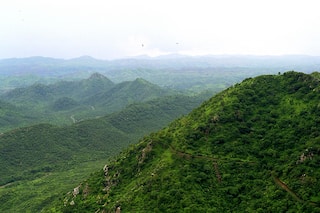WATCH: 'Celestial Cloudscape' In Orion Nebula Captured By Hubble Shows Radiant Regions Around Newborn Stars
Hubble Space Telescope has captured a breathtakingly beautiful 'celestial landscape' in the Orion Nebula. The image shows radiant regions surrounding newborn stars, known as Herbig-Haro objects.

The NASA/ESA (European Space Agency) Hubble Space Telescope has captured a breathtakingly beautiful 'celestial landscape' in the Orion Nebula. The Hubble image shows radiant regions surrounding newborn stars, known as Herbig-Haro objects.
The Herbig-Haro object seen in the Hubble image is known as HH 505. These objects are formed when stellar winds or jets of gas ejected by newborn stars create shockwaves which, in turn, collide with nearby gas and dust at high speeds. The celestial landscape shows colourful regions surrounding HH 505, according to the ESA.
How Was HH 505 Formed?
A star named IX Ori, situated on the outskirts of the Orion Nebula around 1,000 light-years from Earth, releases stellar winds which form shockwaves. These shockwaves collide with nearby gas and dust at high speeds, forming colourful regions around HH 505.
In a video released by ESA's YouTube channel for the Hubble Space Telescope, the luminous regions surrounding newborn stars in the Orion Nebula can be seen.
The curving structures seen at the top and the bottom of the Hubble image represent the outflows from star IX Ori. The interaction of these outflows with the large-scale flow of gas and dust from the core of the Orion Nebula results in the formation of sinuous curves.
UV Radiation Illuminates The Orion Nebula
Astronomers studying the properties of outflows and protoplanetary discs captured these luminous regions using Hubble's Advanced Camera for Surveys (ACS). Ultraviolet (UV) radiation from bright young stars illuminates the Orion Nebula.
Hubble can see the shockwaves created by the outflows from the young star, and also the slower-moving currents of stellar material highlighted by the UV radiation. Astronomers can directly observe jets and outflows and learn more about them with the help of UV radiation.
The Orion Nebula is the closest region of massive star formation to Earth. Since the Orion Nebula is a dynamic region of gas and dust where thousands of stars are forming, it is one of the most scrutinised areas of the night sky.







































